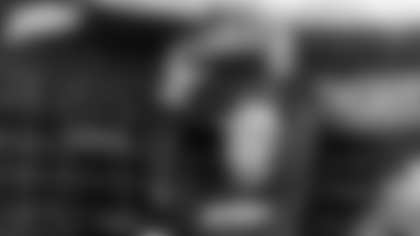Let's get to it:
PAUL HEINBAUGH FROM STRONGSVILLE, OH: What was Terry Hanratty's record as a starting quarterback at Notre Dame? Also, in what round was he drafted by the Steelers in 1969?
ANSWER: Terry Hanratty was the primary starting quarterback for Notre Dame during the 1966, 1967, and 1968 seasons, and during those three years the Fighting Irish's record was 24-4-2. For his college career, Hanratty completed 304-of-550 passes (55.3 percent) for 4,152 yards, with 27 touchdowns and 34 interceptions. Using those numbers to calculate a passer rating according to the NFL formula, Hanratty's rating would have been 70.2. As a sophomore at Notre Dame, Hanratty finished eighth in the Heisman voting; as a junior he finished 10th; and as a senior, he finished third in the Heisman voting behind winner O.J. Simpson of USC and runner-up Leroy Keyes of Purdue. Hanratty entered the NFL via the 1969 NFL Draft, which was Chuck Noll's first as the Steelers coach. In the first round, the team's pick was Joe Greene, and Hanratty was the Steelers' second-round pick, the 30th selection overall, and the third quarterback selected, behind Cincinnati's Greg Cook (fifth overall to the Bengals) and Columbia's Marty Domres (ninth overall to the Chargers).
JAVIER MORI FROM LAS VEGAS, NV: As an 11-year-old Steelers fan, I remember there was a lot of fanfare about Franco Harris being on pace to break Jim Brown's NFL career rushing record. He then was signed by the Seahawks and had a dubious season and retired. What was the sentiment in Pittsburgh about all this, and why didn't he play his last season for the Steelers considering how close he was to breaking the all-time rushing record?
ANSWER: At the end of the 1983 season, Franco Harris had 11,950 career rushing yards, and he needed 263 in 1984 to break Jim Brown's NFL record of 12,312 yards. The Steelers were poised to make a big deal of the accomplishment, with just one of the initiatives being a change from the long-standing policy of having the cover of the Media Guide feature either a Steelers helmet or an NFL football to an image of Franco Harris. But shortly before training camp, Harris' agent orchestrated an ill-conceived plan to get his client a contract extension that included holding out from training camp. Since Harris had an option year left on his current deal, the Steelers' position was that they would not negotiate any extension during a holdout. Harris didn't report to training camp, and the Steelers wouldn't negotiate an extension until Harris did report. The sides dug in and their respective positions hardened until the Steelers released Harris, who eventually signed with Seattle. Harris rushed for 170 yards on 68 carries with the Seahawks in 1984, and then he retired, 93 yards short of breaking Brown's record.
BILL RAYMOND FROM DRIPPING SPRINGS, TX: Regarding the muffed punt in the New England game. Ball recovered in end zone by Steelers would have been a touchback. Not a touchdown. You may need to upgrade your intern. Don't feel bad, I am 78 and make the same type of mistakes all the time.
ANSWER: Not a touchdown? Wanna bet? And before you respond emotionally, I would caution you not to make the kind of mistake you're accusing me of making, because I know what I don't know and am not afraid to go to someone who does know for the correct answer.
BRIAN JENKINS FROM CULPEPER, VA: I have seen more meaningful catches, but I can't recall seeing a more athletic, amazing body-contorting catch than the one George Pickens made in the game against the Browns. I know Odell Beckham Jr.'s catch comes to mind, but in my opinion Pickens' is better. Can you think of a catch in a game that just made your jaw drop as much or more than his?
ANSWER: The catch George Pickens made in Cleveland last Thursday night undoubtedly was a great one, but there were a couple of catches made by Steelers' receivers in Super Bowls that were great as well. The first came in Super Bowl X and was made by Lynn Swann, but I'm not referring to the famous one where he appeared to tip the ball to himself before he came down with it deep down the middle of the field. The one I liked even more happened earlier and came along the right sideline. Swann was running parallel to the sideline when he went high to snag a pass from Terry Bradshaw and then seeming to adjust his body in the air and come down with both feet inbounds. The other catch was the one Santonio Holmes made in the end zone in the final seconds of Super Bowl XLIII.
RANDY PICKRELL FROM DAYTON, OH: I seem to remember in the past that teams that signed a player from another team's practice squad had to keep the player on their 53-man roster until the end of that season. Is that true, or am I just getting old?
ANSWER: Actually, in the mid-1990s there was no rule obliging a team signing a player from another team's practice squad to put that individual on its 53-man roster at all. When Jacksonville joined the NFL for the 1995 season, Jaguars Coach Tom Coughlin had something of a policy of signing players off the Steelers' practice squad a week or two before the teams met, putting him on Jacksonville's practice squad, and then releasing that player the week after the game. The belief was that Coughlin's interest in the player was solely for what information he could glean leading up to the game. That was when the rule was passed that a team signing a player from a team's practice squad had to keep the guy on the 53-man roster for three weeks.
MIKE FOSTER FROM EWA BEACH, HI: The NFL went from blacking out games regionally no matter what, to blacking out games if they aren't sold out? Why?
ANSWER: The original fear was that televising games in the home team's market would have a negative impact on ticket sales, but then the decision was made to allow the telecast of games in the local teams' markets provided the games were sold out 72 hours before kickoff. That has been modified somewhat, but the NFL and the owners have been pleased with the decision because it exposes their product to more people via television while also creating more inventory for the broadcast partners, which in turn has led to increased rights fees that are split with the players to continue growing the pool of money that determines the amount of the salary cap each year.
VICTOR RAYGOZA FROM SOUTH GATE, CA: Do you think there is a chance Ben Roethlisberger could come back and help us out this year?
ANSWER: If you mean Ben Roethlisberger coming back as a player, to quote Coach Mike Tomlin, "Never say never. But never."
VINCE CONSTABLE FROM WILKINS TOWNSHIP, PA: I thought the blackout rule was if it wasn't a sellout within 72 hours of the game, not just because it was a home game. Since the Steelers home sellout streak goes back to 1972 what's up?
ANSWER: The rule that lifted a blackout in the home team's market if a game was sold out 72 hours in advance didn't come until after the 1972 season. That's why the Immaculate Reception game was blacked out in the Greater Pittsburgh area. Keep reading for an illustration.
JOHN STASKO FROM CARY, NC: I saw the Immaculate Reception on television. I lived in Johnstown, Pa., and the blackout extended far enough to include our town. So many of us traveled to Bedford, Pa., and booked rooms along their "motel strip." We had 17 guys in a small room watching the game. When the pass got batted, we all groaned and then … a miracle. As we screamed for Franco Harris to reach the end zone, guys started piling out of the door to the room. As we stood in the parking lot, we looked down the strip and saw thousands of like-minded Steelers fans jumping up and down celebrating what will always be the greatest memory of my sports life.
ANSWER: I only can imagine what that scene must have been like. No wonder it remains such a vivid and special memory for you.
LARRY LAWHEAD FROM GLEN CARBON, IL: Is there any actual logic in scheduling in the NFL? I just noticed the first four games this year for the New York Jets are vs. Baltimore, at Cleveland, vs. Cincinnati, and at Pittsburgh. Just seems very odd to have a team start off with four consecutive games outside their division, and all of those non-division games being against teams from the same division. Or is questioning scheduling as pointless as trying to find logic in the officiating?
ANSWER: All teams have either strange or difficult, or both, patches in their schedules each season, and I find those to be less annoying than the consistently inconsistent and often arbitrary officiating.













